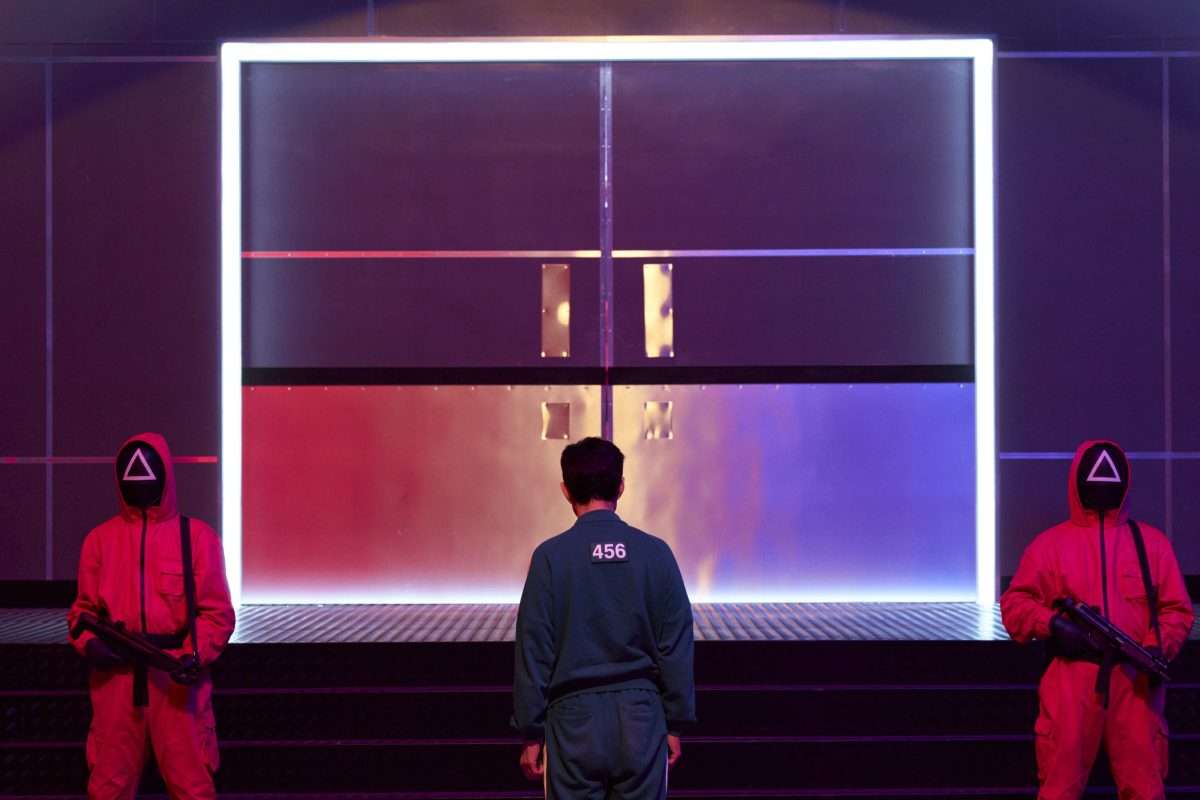Squid Game Histoire Vraie? The hit Netflix series sparked global conversations about debt, inequality, and the dark side of human competition. But how much of the show’s brutal reality reflects the actual struggles faced by people in South Korea and beyond? This exploration delves into the socio-economic pressures that might drive individuals to desperate measures, comparing the fictional games to real-life Korean traditions and exploring the show’s impact on global perceptions of violence and social injustice.
We’ll examine the show’s portrayal of debt, violence, and social inequality against the backdrop of South Korean society.
We’ll unpack the cultural context of the games, exploring themes of competition and survival deeply embedded in Korean culture. We’ll also analyze the show’s visual storytelling and its powerful impact on viewers worldwide, examining the critical acclaim and controversies it generated. Ultimately, we aim to understand how “Squid Game” uses heightened drama to reflect real-world issues, prompting crucial discussions about the societal pressures and inequalities that exist globally.
The Socioeconomic Realities Behind “Squid Game”: Squid Game Histoire Vraie

The global sensation “Squid Game” captivated audiences with its high-stakes survival games, but beneath the thrilling surface lies a stark reflection of South Korea’s socioeconomic realities. The show’s popularity stems not just from its gripping plot, but also from its unsettlingly accurate portrayal of the pressures faced by many South Koreans struggling with crippling debt and immense social inequality.
So you’re wondering about “Squid Game histoire vraie”? While the show’s fictional, the desperation it portrays sadly reflects real-world struggles. Think about the scale of that desperation; it’s almost as visually stunning as the incredible light show you’ll see at the chinese new year drone show , though with far less celebratory vibes. The contrast highlights how far removed from such spectacle many people are, echoing the core themes of Squid Game’s brutal premise.
Debt in South Korea: A Crushing Reality
South Korea’s highly competitive society and economic pressures contribute to a significant debt problem. Intense pressure to succeed academically and professionally, coupled with the high cost of living (especially housing and education), often leads individuals to accumulate substantial debt. This is further exacerbated by a culture that sometimes stigmatizes seeking help for financial difficulties.
Examples of real-life debt crises are abundant. Many individuals take out high-interest loans to cover education expenses, only to struggle with repayment after graduation. Business failures, especially among small and medium-sized enterprises (SMEs), can leave entrepreneurs and their families deeply in debt. The impact on individuals and families can be devastating, leading to homelessness, mental health issues, and even suicide.
While South Korea has legal and social support systems, such as debt restructuring programs and credit counseling services, access and effectiveness vary. Many individuals are hesitant to seek help due to social stigma or the complexities of the legal processes. The show’s depiction of desperate individuals willing to risk their lives for a chance at financial freedom mirrors the desperation some South Koreans feel when facing insurmountable debt.
The show exaggerates the situation for dramatic effect, but the underlying desperation and the societal pressures that lead to such extreme measures are sadly relatable to the experiences of many in South Korea.
So you’re wondering about “Squid Game histoire vraie”? While the show’s fictional, the desperation it depicts sadly reflects real-world struggles. Think about the pressures that can lead to such extremes – it’s a stark reminder of human vulnerability, similar to the devastating impact of events like the fullerton plane crash , where lives were tragically lost due to unforeseen circumstances.
Ultimately, “Squid Game histoire vraie” prompts us to consider the societal factors that create such high-stakes scenarios.
Survival Games and Korean Cultural Context
The popularity of “Squid Game’s” survival game premise isn’t entirely unique; competition and survival themes are prevalent in Korean culture and media. This section explores the cultural influences shaping the show’s reception.
Competition and Survival in Korean Culture
Korean culture, with its emphasis on education, competition, and hierarchical structures, has fostered a society where success often comes at a high cost. The pressure to excel academically and professionally is immense, creating a highly competitive environment. This competitive spirit is reflected in various aspects of Korean life, from academic examinations to the highly competitive job market.
Traditional Korean games, while not as extreme as those in “Squid Game,” often incorporate elements of risk, competition, and elimination. Examples include “Yut Nori,” a board game involving chance and strategy, and various traditional children’s games with elements of competition and elimination. These games, while not deadly, reflect a cultural acceptance of competition and the idea of winners and losers.
The popularity of “Squid Game’s” themes can be attributed, in part, to this cultural context. The show’s extreme depiction of competition and survival taps into existing anxieties and societal pressures within Korean society, making it particularly resonant with local audiences. The show’s global success, however, suggests a broader appeal, reflecting anxieties about economic inequality and the pressures of modern life that transcend national borders.
Comparative Table: “Squid Game” Games vs. Korean Traditions
| “Squid Game” Game | Description | Similar Korean Game/Tradition | Key Differences |
|---|---|---|---|
| Red Light, Green Light | Players must freeze when the doll turns around. | Traditional Korean children’s games with similar “freeze” elements. | Life-or-death stakes vs. playful competition. |
| Honeycomb Candy | Players must carefully carve shapes from a thin honeycomb. | Traditional Korean snacks and sweets. | High pressure and lethal consequences vs. casual enjoyment. |
| Tug-of-War | Teams compete in a tug-of-war. | Traditional Korean tug-of-war games. | Brutal physicality and elimination vs. friendly competition. |
| Marbles | Players gamble marbles with strategic gameplay. | Traditional Korean marble games. | High stakes and deception vs. simple game of skill. |
Violence and Social Inequality in “Squid Game”
The series uses violence and visual elements to powerfully illustrate the social inequalities and power dynamics at play. This section delves into the show’s symbolic use of violence and its reflection of real-world issues.
Violence and its Symbolic Meaning
The violence depicted in “Squid Game” is not gratuitous; it serves as a powerful symbol of the systemic violence inherent in extreme social inequality. The games themselves are designed to expose the inherent brutality of a system that pits the desperate against each other for survival. The violence is often sudden and shocking, mirroring the unexpected hardships faced by many struggling with poverty and debt.
Social Inequalities and Real-World Parallels
“Squid Game” vividly portrays the stark social inequalities present in South Korean society. The players are primarily drawn from marginalized groups struggling with debt and limited opportunities. The VIPs, on the other hand, represent the wealthy elite who profit from the games and the suffering of others. This stark contrast reflects the real-world gap between the rich and poor in South Korea and globally.
Visual Representation of Social Strata, Squid game histoire vraie
A visual representation could be a pyramid. At the bottom, a large base depicts the impoverished players, wearing their drab green tracksuits, representing the vast majority struggling with debt and societal disadvantages. As the pyramid ascends, the number of individuals decreases, transitioning to the VIPs in their luxurious attire, sitting at the top of the pyramid, representing the wealthy elite who control the games and the players’ fates.
The pyramid’s structure clearly illustrates the immense power imbalance and social hierarchy.
Global Impact and Reception of “Squid Game”

The show’s global success has sparked crucial conversations about social issues worldwide. This section examines the show’s impact and its varying receptions across different regions.
Impactful Scenes and Cultural Resonance

Several scenes resonated powerfully with global audiences. The “Red Light, Green Light” game, with its chilling juxtaposition of childlike innocence and brutal elimination, became a viral sensation. The scene where Gi-hun chooses to play the final game, despite the immense risk, reflects a deep-seated desire for change and a willingness to fight against the system. These scenes highlighted the show’s commentary on social injustice and the desperation that drives people to extreme measures.
“Squid Game” ignited discussions about income inequality, the failures of social safety nets, and the ethical implications of extreme wealth disparity. The show’s popularity demonstrated a growing global awareness of these issues and a willingness to engage with them through entertainment.
The show’s global success indicates a shift in attitudes towards violence and inequality in entertainment. Audiences are increasingly receptive to shows that tackle difficult social issues head-on, even if it involves graphic depictions of violence. The willingness to engage with these complex themes suggests a desire for more nuanced and socially relevant storytelling.
While widely popular globally, the reception of “Squid Game” varied. In South Korea, the show resonated deeply due to its accurate portrayal of societal pressures. Internationally, the show’s themes of inequality and survival resonated with audiences grappling with similar issues in their own contexts. However, some criticized the show’s graphic violence, while others questioned the accuracy of its portrayal of South Korean society.
So you’re wondering about “Squid Game histoire vraie”? While the show’s fictional, its themes of desperation resonate. Think about the scale of societal pressure – imagine a massive, coordinated spectacle like the china drone show 2032 , but instead of light shows, it’s a life-or-death game. That kind of controlled, visually stunning event highlights how easily a desperate population could be manipulated, just like in the Squid Game universe.
“Squid Game” Games: Fact vs. Fiction

While the games in “Squid Game” are fictional, they draw inspiration from aspects of Korean culture and childhood games. This section explores the similarities and differences between the show’s games and real-world counterparts.
Rules and Mechanics of “Squid Game” Games
Each game in “Squid Game” has distinct rules and mechanics. “Red Light, Green Light” involves players freezing when a doll turns. “Honeycomb Candy” requires players to carve shapes from a thin honeycomb without breaking it. “Tug-of-War” is a classic game of strength and strategy. “Marbles” is a game of skill and deception.
Real-World Parallels and Differences
Many of the games in “Squid Game” have real-world parallels. “Red Light, Green Light” is reminiscent of childhood games. “Tug-of-War” is a widely played game worldwide. “Marbles” is a traditional children’s game. However, the critical difference lies in the deadly consequences in “Squid Game,” unlike their real-world counterparts, which are played for fun or friendly competition.
Comparison: “Squid Game” Games vs. Real-World Games
- “Red Light, Green Light”: Similar childhood game, but with life-or-death consequences in the show.
- Honeycomb Candy: Similar traditional treat, but with lethal failure in the show.
- Tug-of-War: Similar traditional game, but with brutal elimination in the show.
- Marbles: Similar traditional game, but with high-stakes gambling and deception in the show.
Epilogue
While “Squid Game” is a fictional story, its exploration of debt, social inequality, and the human cost of extreme competition resonates deeply with audiences worldwide. The show’s success highlights a global interest in confronting uncomfortable truths about our societies. By examining the show’s themes within the context of South Korean reality, we gain a deeper understanding of both the fictional world of the series and the complex social issues it reflects.
The unsettling parallels between the show’s exaggerated scenarios and real-world struggles leave a lasting impression, prompting us to consider the human cost of systemic inequalities and the desperate measures some individuals might take to survive.
Essential Questionnaire
What inspired the games in Squid Game?
The games are a mix of fictional creations and inspiration from traditional Korean children’s games, albeit with deadly consequences in the show.
Is there a real-life equivalent to the “Squid Game”?
No, there isn’t a direct real-life equivalent. The show is a fictionalized dramatization, but its themes resonate with real-world struggles.
How accurate is the show’s portrayal of South Korean debt?
While exaggerated for dramatic effect, the show highlights the very real issue of high debt levels and financial hardship faced by many in South Korea.
What was the global reaction to Squid Game?
The show became a global phenomenon, sparking widespread discussion about social issues, economic inequality, and the nature of human competition.
